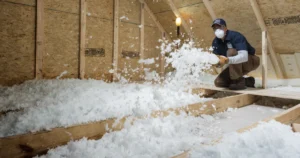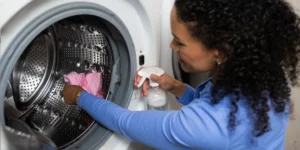Keeping your home warm and cozy during the winter months can take a toll on your energy bills, especially if your furnace isn’t operating efficiently. Fortunately, there are several simple steps you can take to improve the energy efficiency of your furnace. By making your furnace work smarter, you’ll not only save on energy costs but also extend the life of your heating system. Let’s explore some of the best ways to boost your furnace’s efficiency and keep your home warm without wasting energy.
1. Change or Clean the Furnace Filter Regularly
One of the easiest and most effective ways to improve your furnace’s energy efficiency is to change or clean the air filter regularly. Over time, furnace filters can become clogged with dust, dirt, and other debris, which reduces airflow and forces the furnace to work harder. This not only decreases efficiency but can also lead to higher energy bills and potential damage to the system.
- How often to change the filter: It’s recommended to check the filter every 1-3 months, especially during the heating season. If the filter is dirty or clogged, replace it with a new one. If your furnace has a reusable filter, clean it thoroughly and reinstall it.
By keeping the air filter clean, you’ll improve airflow, help your furnace run more efficiently, and maintain better indoor air quality.
2. Install a Programmable Thermostat
A programmable thermostat is a smart way to optimize your furnace’s energy usage without sacrificing comfort. With a programmable thermostat, you can set different temperature schedules for different times of the day, ensuring that your furnace isn’t working harder than necessary when you don’t need it.
- How it helps: Lower the temperature when you’re sleeping or away from home, and set it to warm up the house just before you wake up or return. By reducing heating during off-hours, you can save energy and reduce your heating bills.
Many modern thermostats are also smart thermostats, which allow you to control the temperature remotely via a smartphone app. This gives you even more control over your furnace’s energy usage, helping you make adjustments on the go.
3. Seal and Insulate Your Home
If your home has leaks or poor insulation, your furnace has to work harder to maintain the desired temperature. Sealing air leaks and improving insulation can make a huge difference in reducing heat loss and improving furnace efficiency.
- Seal air leaks: Check for drafts around windows, doors, and other openings like electrical outlets and vents. Use weatherstripping and caulk to seal any gaps or cracks where warm air might escape and cold air could enter.
- Insulate your home: Ensure that your home is properly insulated, especially in the attic, walls, and basement. Insulation helps keep warm air inside, reducing the need for the furnace to run constantly. Consider upgrading your insulation if it’s old or insufficient.
By reducing heat loss, you’ll improve the overall energy efficiency of your home and allow your furnace to heat more effectively.
4. Schedule Regular Furnace Maintenance
Regular furnace maintenance is key to keeping your heating system running efficiently. Annual or semi-annual professional tune-ups can catch small issues before they become major problems, ensuring that your furnace operates at peak performance.
- What to expect from maintenance: During a professional maintenance visit, the technician will inspect and clean the furnace, check for any potential issues, lubricate moving parts, and test the system’s efficiency. They’ll also check the burner, heat exchanger, and blower motor for proper operation.
Regular maintenance helps improve furnace efficiency, prolong its lifespan, and reduce the risk of unexpected breakdowns.
5. Keep Vents and Registers Clear
Blocked or closed vents and registers can reduce airflow and put extra strain on your furnace, making it work harder to heat your home. To maximize efficiency, make sure all vents and registers are open and free of obstructions like furniture, rugs, or curtains.
- Tip: Walk through your home and check every vent to ensure nothing is blocking the airflow. Even if you don’t use certain rooms regularly, it’s still best to leave the vents open to allow for even heat distribution.
By ensuring that warm air can circulate freely, you’ll help your furnace run more efficiently and keep your home consistently comfortable.
6. Upgrade to a High-Efficiency Furnace
If your furnace is old or outdated, upgrading to a high-efficiency model could significantly reduce your energy consumption. Modern furnaces are designed to use less fuel and produce more heat, making them far more energy-efficient than older models.
- Efficiency rating: Look for furnaces with an AFUE (Annual Fuel Utilization Efficiency) rating of 90% or higher. An AFUE rating of 90% means that 90% of the fuel used by the furnace is converted into heat, while only 10% is wasted. High-efficiency furnaces can have AFUE ratings as high as 98%, drastically improving energy savings.
Though the initial cost of upgrading to a high-efficiency furnace can be significant, the long-term savings on your energy bills make it a worthwhile investment. Additionally, you may qualify for rebates or tax credits that can help offset the cost.
7. Use Ceiling Fans to Circulate Warm Air
Ceiling fans aren’t just for cooling! They can also be used to help circulate warm air during the winter months. By setting your ceiling fan to rotate clockwise at a low speed, you can push warm air that has risen to the ceiling back down into the room, reducing the workload on your furnace.
- Tip: Reverse the direction of your ceiling fans in the winter to help redistribute heat more evenly throughout your home. This simple step can make rooms feel warmer, allowing you to lower the thermostat and save on energy.
8. Use the Sun for Passive Heating
Take advantage of the sun’s natural heat by opening curtains and blinds during the day to let in sunlight, especially on south-facing windows. Sunlight can provide a natural source of warmth, reducing the need for your furnace to run as frequently.
- Close curtains at night: Once the sun goes down, close curtains and blinds to keep the warmth inside and reduce heat loss through windows.
By incorporating passive solar heating into your routine, you can reduce your reliance on the furnace and save energy.
9. Upgrade Your Windows
If your windows are old or single-pane, they may be letting in drafts and reducing your home’s energy efficiency. Upgrading to energy-efficient, double-pane windows with Low-E (low-emissivity) coatings can help insulate your home better, keeping more heat inside and allowing your furnace to run less often.
- Caulking and sealing: If upgrading your windows isn’t an option, you can improve efficiency by resealing them with caulk and adding weatherstripping to reduce drafts.
Better-insulated windows help maintain a more stable indoor temperature, reducing the strain on your furnace and lowering energy costs.
Final Thoughts: Keep Your Furnace Running Efficiently
Improving the energy efficiency of your furnace doesn’t have to be difficult or expensive. By following these tips—such as changing filters regularly, sealing your home, scheduling maintenance, and using smart heating practices—you can help your furnace run more efficiently, reduce your energy bills, and maintain a warm and comfortable home all winter long. Not only will these steps save you money, but they’ll also prolong the life of your furnace, making your home’s heating system more reliable for years to come.









